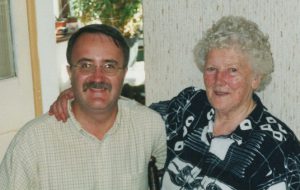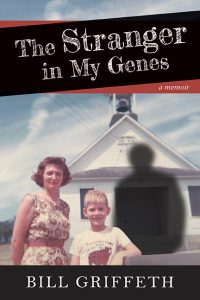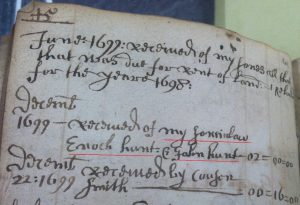 As the old year winds down over the next few days, I hope that dedicated Vita Brevis readers will spare a few moments to (re)read some of the most popular posts of 2017. (The second part of this omnibus post will run on New Year’s Day 2018.) The following twelve posts have some of the highest page view counts of the year, but in fact Christopher C. Child should appear four times on this list – that is, one-third of the year’s most popular Vita Brevis posts belong to him. To mix things up a little, I have included other posts, so as to spread the authorial wealth: Chris, Michelle Doherty, and Jeff Record each have two posts here, one appearing today and the other on Monday.
As the old year winds down over the next few days, I hope that dedicated Vita Brevis readers will spare a few moments to (re)read some of the most popular posts of 2017. (The second part of this omnibus post will run on New Year’s Day 2018.) The following twelve posts have some of the highest page view counts of the year, but in fact Christopher C. Child should appear four times on this list – that is, one-third of the year’s most popular Vita Brevis posts belong to him. To mix things up a little, I have included other posts, so as to spread the authorial wealth: Chris, Michelle Doherty, and Jeff Record each have two posts here, one appearing today and the other on Monday.
 The year began with Chris’s post on “A ‘wasted’ correction”:
The year began with Chris’s post on “A ‘wasted’ correction”:
In an earlier blog post about former ancestors, I noted some instances where my modern-day research turned ancestors into “former ancestors,” some quite recently. This one involves a correction I discovered several years ago; while valid, I should really have reviewed these charts more recently, for confirmation.
This example starts with Mary Colburn (born in 1747). She was identified on these family charts as my great-grandfather’s great-great-grandmother, the wife of Thaddeus Richards of Medway, Massachusetts, and Ashford, Connecticut, whom she married in 1770. According to this chart, she was the mother of my ancestor Moses Richards. Mary’s own chart identifies her parents as Joseph Colburn (born in 1718), and Hannah Metcalf, married in 1744, with further information on their ancestors.
My correction to this second chart came almost twenty years ago when I visited the library and worked one evening with Gary Boyd Roberts. In the then recently revised and updated Dedham vital records, we found the 27 November 1770 marriage of Thaddeus Richards and Mary Colburn, and Mary’s birth on 1 October 1747. This last record confirmed her father as Joseph, but listed her mother as Dorothy. Then, in the same Dedham vital records was Joseph Colburn’s 1744 marriage, but it was not to “Hannah Metcalf,” but rather to Dorothy Draper.
 In February, Alicia Crane Williams wrote about a cultural focus on surnames (and, thus, male lines) in “Daughtered out”:
In February, Alicia Crane Williams wrote about a cultural focus on surnames (and, thus, male lines) in “Daughtered out”:
In a patronymic culture we put emphasis on surnames that are passed from son to grandson. This is mostly a matter of habit, because tracing a genealogy of descendants by their surname is usually much easier than tracing descendants through female lines where the family names keep changing every generation.
I’ve never been politically active – Women’s Lib came along a few years too late for me; I was already out of college and missed the movement, although I embraced “most” of the ideas – but lately I’ve been thinking more about how we all still, out of habit, approach genealogical research and publication mostly by surnames.
The most praise I have received for any of the Early New England Families Study Project sketches has been for those where women were the principal subjects – e.g., Elizabeth (Fones) (Winthrop) (Feake) Hallett and Elizabeth (Hawkredd) (Coney) (Mellowes) Makepeace. These ladies get their own sketches because they had children by more than one husband, making their sketches different from either husband’s alone. Unfortunately, time (we have 33,000 sketches to do by male surname) and often lack of information (“unknown”) prevents us from giving full sketches to the wives of single husbands, but that doesn’t mean they are not worthy.
 Michael Dwyer has only written one post for Vita Brevis – Call me, Michael! – but his was an impressive blog début. In “Serendipity,” he recounted some instances of fortuitous connections leading to genealogical breakthroughs:
Michael Dwyer has only written one post for Vita Brevis – Call me, Michael! – but his was an impressive blog début. In “Serendipity,” he recounted some instances of fortuitous connections leading to genealogical breakthroughs:
In the fall of 1983, I drove to West Wareham, Massachusetts on a mission to find my great-grandfather’s grave. As I searched in vain for the stone, an elderly man who lived across the road from the cemetery spied my Vermont license plate and asked for whom I was searching. “Millard Morse, father of Emory,” I said. He retorted, “Who ARE you?” Revealing my identity as Emory Morse’s grandson brought a hearty handshake from Ernest Howes, who disclosed that he and my grandfather grew up together but had lost touch. He said, “Turn around.” There next to his own home was the house where my grandfather was born in 1907. Ernest also supplied the answer to a long-standing question of what happened to the family of Millard’s sister, Edith, who left for California in the 1930s. Ernest’s wife just happened to have the address of Edith’s granddaughter, as they were third cousins. That memorable visit connected me to a lost branch of my family with whom I remain in touch.
 In April, Bill Griffeth wrote a follow-up to his 2016 posts on his memoir, The Stranger in My Genes. In “Strong emotions,” he tells the story of an acquaintance who learned in middle age that he was adopted:
In April, Bill Griffeth wrote a follow-up to his 2016 posts on his memoir, The Stranger in My Genes. In “Strong emotions,” he tells the story of an acquaintance who learned in middle age that he was adopted:
During our lunch he read back to me passages from my book where I described the anger, depression, and feelings of abandonment I experienced. Some critics have taken me to task for those passages, accusing me of over-reacting and being a whiner. But I don’t care.
Here’s what I told Alex: never apologize for how you feel. Even after six years, I still saw genuine hurt in his eyes as he told me his story. Those feelings are real, I told him, and he doesn’t need to have them validated by others who have no idea what he’s going through.
The plan now is for Alex to take a DNA test. Will he find any close relatives who will be able to shed light on his real heritage?
 Michelle Doherty’s May post on linguistic traps for genealogists proved very popular:
Michelle Doherty’s May post on linguistic traps for genealogists proved very popular:
Another case where I found stated relationships to be different than suspected involved two “cousins” who were for some reason identified as siblings. In looking through probate records of a Coats family living in Newburyport, Massachusetts, I noticed discrepancies in a relationship I found identified there. According to Newburyport vital records, David Coats and Mehitable Thirston were married, had a child, and died in this town. Their daughter Elizabeth was also married in the town to a man named Thomas Greenleaf. In Mehitable’s will she stated her husband David had a nephew named Benjamin Coats. This nephew was given some money for his “advancement in life” in Mehitable’s will, since her husband David had died intestate the previous year.
Newburyport death and probate records indicated that Benjamin Coats was a mariner who died in the West Indies in 1793 at the young age of 22. He did not have a will, but I found a letter of administration for him which named Elizabeth Greenleaf administrator of his estate. What is odd about this case is that in these documents Elizabeth refers to Benjamin as her brother multiple times. However, in her will, Mehitable clearly indicates that Benjamin Coats was a nephew to her husband David, technically making Benjamin and Elizabeth cousins. It was unclear why Elizabeth referred to Benjamin as her brother, but perhaps she felt especially close to him.
These two examples serve to show that we cannot always take stated relationships at face value. We need to do our best to slip out of our modern day perspectives and find ways to view these historical documents through an alternate lens. Even if relationships appear to be clearly stated in the historical record, there may be instances where we may need to dig a little deeper to find additional supporting evidence when something doesn’t quite line up.
 Wrapping up the first half of 2017 is Jeff Record’s “Quaint societies,” on a collection of daguerreotypes from Amherst College. While he is not descended from any of the men pictured, it turns out he is related to a number of them:
Wrapping up the first half of 2017 is Jeff Record’s “Quaint societies,” on a collection of daguerreotypes from Amherst College. While he is not descended from any of the men pictured, it turns out he is related to a number of them:
As family historians, each one of us has taken a few trips down the Google highway in search of something in particular – only to be sidelined by happenstance. These occurrences serve as a twofold check, punctuating brick walls while allowing us to flex our genealogical muscles. For the most part these diversions are informative and entertaining, serving to supplement our knowledge of people or subjects. The beautiful part of being “side tracked” is that, for the most part, all roads lead back home and to New England.
This was the case for me as I started out (once again) on the trail of my maternal great-great-great-great-grandfather Amherst Hoyt (1785?–1851). I’ve been trying to piece together his westward migration from New Hampshire to Iowa – and in the Google archetype, all things ‘Amherst or Hoyt.’ (Sometimes these combination Google searches make me feel as if I am ‘game show contestant,’ with the prize hidden behind whichever door I’m bid enter.) But little did I expect that the search for Grandpa Amherst Hoyt would take me directly to Zephaniah Swift Moore, the nephew of my paternal ancestor Lydia Swift Young and founder of Amherst College. See what I mean? All roads lead home.
Concluded here.